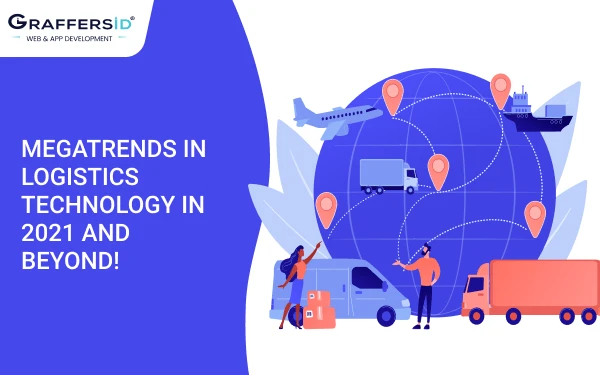When we think of the supply chain, the first thing that comes to our mind is- “Logistics Technology 2024”. The only reason is that logistics technology has automated everything. It helped businesses and saved time in gathering data, processing, analysis, and transmission while maintaining high-level accuracy. Here logistics software is of great help in streamlining the flow of things in logistics operations. You can hire logistics software developers who can help you by refining the production cycle and simplifying the process to access crucial insights.
The industry sees a meteoric rise in the market. Due to increased demand for critical innovations to drive the entire logistics system toward automation. The only reason that businesses have started investing massively in logistics software is. It also indicates an increased usage of logistics technologies to enhance business intelligence.
We can say, that to enhance the competitiveness and performance of their business, entrepreneurs should also look up logistics software. To stay ahead, analyze the latest trends in logistics technology because the future seems to have more revolutionary changes ahead. And 2024 is the advent of such disruptive technologies from robotics to AI that will progressively permeate all industries.
In this blog, we will be discussing the megatrends in Logistics Technology that are likely to impact businesses. So, want to know more, keep reading!
9 Trends in Logistics Technology that will stay with us in the Future
If you take a closer look at logistics technology, you will realize that it has a wider scope and potential to deal with numerous operations and processes. One of the reasons for such a transformation is the new approach and invention that goes along with the current trends. Here we are with a few megatrends that we can expect to see for a long time beyond 2024.
1) Artificial and Augmented Intelligence
AI has been at the core of the technology in various industry verticals and logistics is one of them. Logistics has begun integrating AI to refine the flow of operations by including transportation, route planning, and demand planning.
Moreover, Augmented Intelligence could be seen making its way into logistics. It will combine the efforts of human planners that include experience, customer service, flexibility, and more. The best example could be seen in warehouse management to optimize the distribution of diverse goods and their storage. It is the advent of third-generation business intelligence where we can expect smart industry systems to have stunning cognitive abilities that will display instructions of work plans with detailed operational instructions. This transformation will help in reducing the lead time and training period.
According to research, In 2024 Augmented Intelligence is expected to create a business value of $2.9 trillion that will increase worker’s productivity by 6.2 billion hours globally. Thus, we can expect more and more companies to deploy AI solutions aimed at reducing errors and saving cost and time.
2) Digital Twins
Digital Twin technology employs replicas of physical devices to run simulations in both the physical state and behavior of things. The study found that the global market size of the digital twin technology was valued at USD 2.26 billion in 2017 and is expected to expand at a CAGR of 38.2 from 2018 to 2025. The use of digital twin technology is expected in logistics that will stay with us for at least the next 5 years.
If we take a look at the current modeling of the systems, they don’t consider physical and behavioral aspects. These include modification on the part of owners, accumulation of fatigue in structure, and usually wearing and tearing. Digital twin technology helps in just that where it has a huge potential to track, monitor, diagnose, and real-time digital awareness. Some of the potential used cases include:
- Predicting the performance of packaging material
- Enhancing the shipment protection
- Optimization of design and performance in support of logistics
- Integrating operations
- Creating a dynamic delivery network
3) Real-Time Supply Chain Visibility
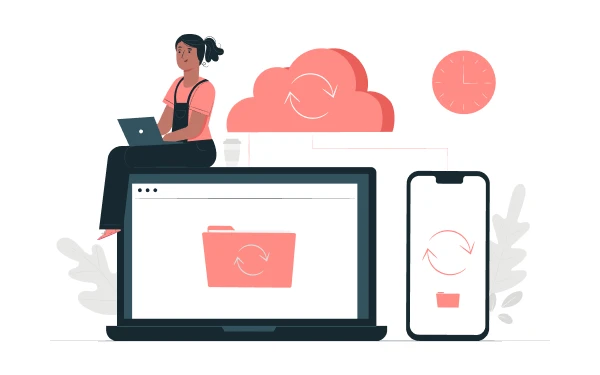
Supply chain visibility is not a new concept in logistics, but we can expect an increase in its prevalence while taking a step ahead and becoming real-time.
The biggest reason for such a transformation is increasing demand on the part of customers and carriers. This change in demand indicates that companies have to implement competitive supply chain visibility solutions by using real-time data.
By real-time data, we mean traffic patterns and weather conditions that can redirect supply and allow for better optimization of the routes. And, the companies that have deployed SCV have already experienced more than 20% growth in their efficiency.
IoT sensor technology is another part of supply chain visibility that is crucial for tracking shipments. Here it makes use of cloud services where the connected IoT device allows warehouses to track inventory, vehicles, and equipment facilitating real-time monitoring.
Owing to this, a partnership between logistics companies and IoT startups is going to be one of the biggest trends in 2021 and beyond. It will facilitate logistics companies to hire logistics software developers to power their logistics systems.
4) Blockchain
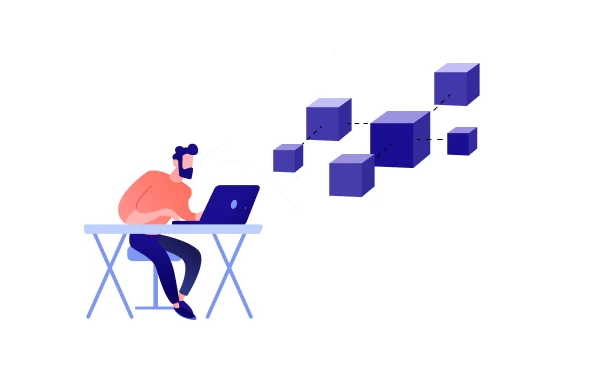
Blockchain is the biggest tech buzzword of the last decade with a revolutionary potential that is showing no signs of leaving us any sooner. The best-known implementation was Bitcoins, but now it has made its way into various industry verticals and logistics is one of them. Distributed ledger technology is associated with blockchain that imparts transparency to the entire logistics system.
Moreover, it will ensure security and traceability that will facilitate easy data sharing. Not only this, it will eliminate the need for any third party and will tighten the security to a level where it would be impossible for hackers to trick the system.
However, there is still a long way to go for companies to completely adopt blockchain technology. All they need to do is to cleanse, standardize, and digitize the data they have.
5) Eco-Logistics
Have you heard anything about green logistics?
It is going to be one of the debatable topics shortly that will emphasize the need to reduce carbon footprints and the degree of waste. And, the best thing is, companies have already started to incorporate sustainable logistics by recycling initiatives and deploying reusable packaging.
Intelligent dispatching solutions like TMS systems are one way that companies are trying to optimize delivery. And, it will apply to intralogistics to boost the performance of fewer vehicles aimed to eliminate transporting “air” and empty packaging to reduce energy consumption and the number of trips.
Ecological warehouses or green warehouses are something that we are already seeing and it will be on the rise. As companies are bound to fulfill their social responsibility, they are making efforts to completely digitize their paperwork.
It is for this reason they are streamlining the material flow management system as a part of their environmental measure in warehousing and logistics.
6) Last-Mile Delivery Automation
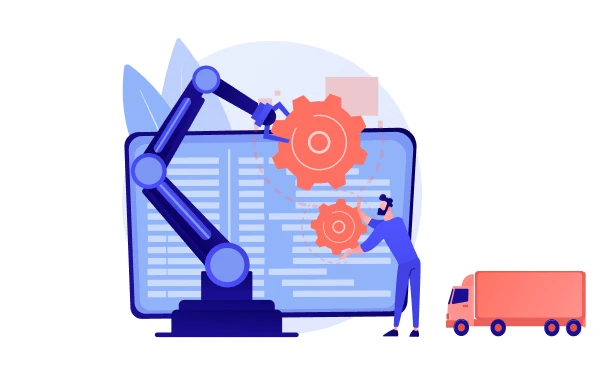
Last-mile logistics is the part of the supply chain that has been the target for many businesses after the omnichannel distribution in E-commerce. We can call it delivery uberization which is based on the direct contact between consumers through mobile technologies.
Last-mile delivery logistics are subject to automation at a greater level that includes trans-shipment and fulfillment centers, logistic hubs, shipping automation, advanced analytics, and the usage of ML. It is undertaken to simulate and predict customer behavior patterns, forecast material flow, and logistics routes.
7) Data Standardization and Advanced Analytics
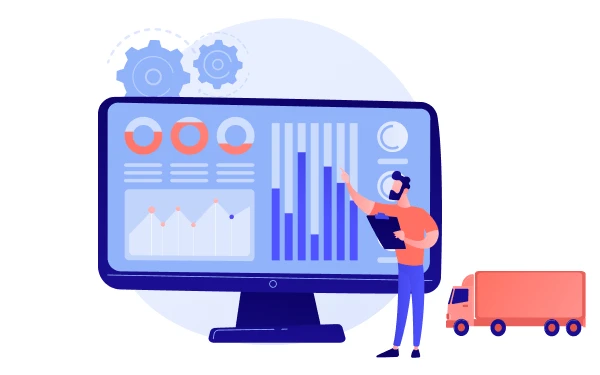
When it comes to data standardization, it has never been at the core of the logistics industry. Companies have stored it wherever they want to, but that leads to a scattered ecosystem resulting in inefficient operations that lack digitization.
So, the companies who want to survive the massive changes that are to come will have to keep up with the data standardization and incorporation of advanced analytics.
We can see that companies are moving towards creating common information technology standards to completely digitize and facilitate interoperability.
Moreover, young startups are focusing on advanced analytics platforms to resolve data inconsistency issues that are helping to cleanse the data. Some of the best deployments could be seen in the areas of proactive linehaul planning, demand forecasting, predictive maintenance, last-mile delivery improvements, and more.
8) Autonomous Vehicles
You might have heard about self-driving trucks and drones that are closely associated with logistics technology and yes, it is going to be one of the most talked-about trends in the future.
One such example is the collaboration between UPS Ventures and Tu Simple. They will test the usage of self-driving trucks on the route to Arizona to determine the potential of vehicles. And also to improve services and increase the level of efficiency in the UPS network.
Fleet maintenance is also one area that grabs the attention of the companies that use autonomous vehicles. Here Austrian Airlines saw deploying drones for standard maintenance and documenting any potential damage. It is helping the company to cut down costs and shift a great workload.
Apart from this, safety improvements, reduction in operational costs that include driving expenses, and timely delivery could be expected after the implementation of autonomous vehicles.
9) Warehouse Robotics
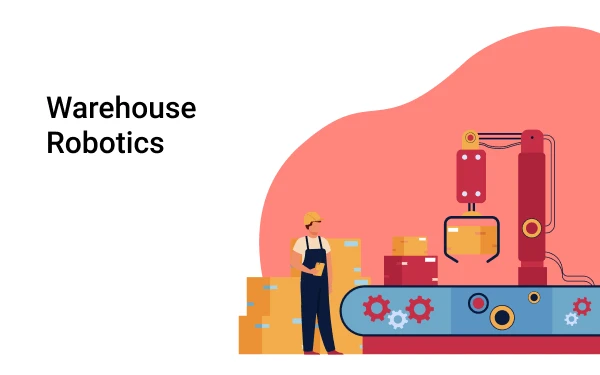
When it comes to warehouse operations, logistics have witnessed a significant transformation recently. If you closely look at the practice of adopting robotics in the logistics area, you will find more tangible and clear benefits.
Owing to the benefits, we can expect warehouse robotics to be in trend in 2021 and beyond. Robots can reduce human errors and can bring in significant profits as the cost incurred is significantly decreased.
Moreover, it will ensure the safety of workers by undertaking dangerous jobs such as checking high racks for storage spaces. Also, it helps increase the delivery speed and overall efficiency through automation that will eventually satisfy the customers and grow your brand.
So, above were the biggest trends that we can expect in the future. All these are likely to impact the logistics and manufacturing industry, where logistics software will have a crucial role to play.
If you are looking forward to building a robust solution, hire logistics software developers from Graffersid. India-based, top logistics application development company. We have worked with numerous companies across the globe and helped them to make 10X profit and raise funds.
GraffersID offers you to hire dedicated developers with in-depth knowledge who will try to accommodate all your requirements.
Give us a quick call here for more information.
